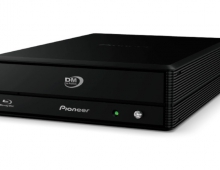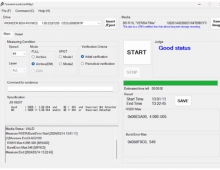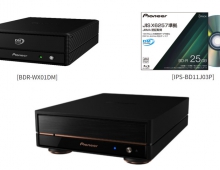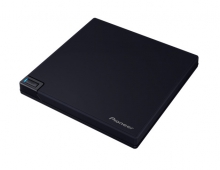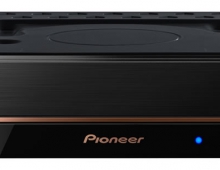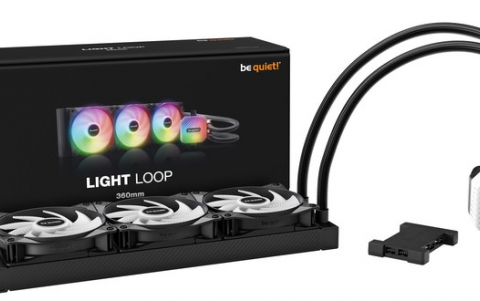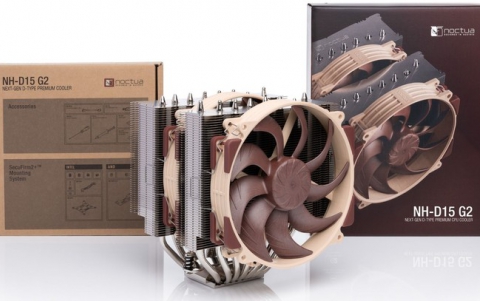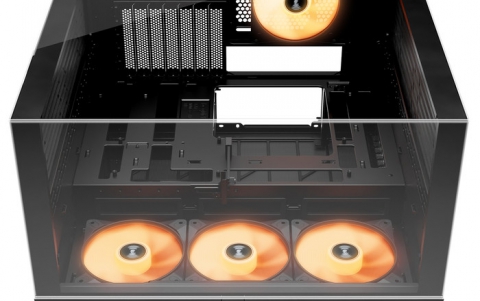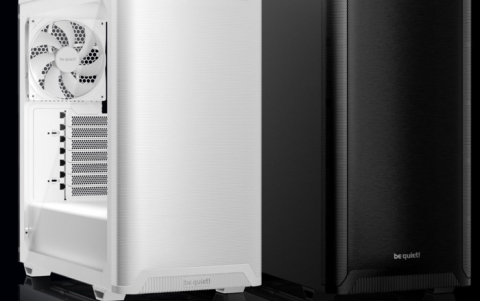
Pioneer USA and IDC release study about DVD formats
Technology industry analyst firm IDC and Pioneer Electronics (USA) Inc. jointly released a new industry study today that identifies DVD technology, the fastest growing technology in the history of consumer electronics, as the potential key to propping up the sluggish PC and chip industries.
Titled Consumer Demand and the Emerging Markets for Recordable DVD, the study points to consumer interest and demand for home video creation and editing capabilities from their PCs as a potential driver to purchase faster, next-generation machines with greater hard-drive space and multimedia capabilities. That's good news for PC and chip manufacturers who have had difficulty meeting recent earnings targets, according to Wolfgang Schlichting, chief DVD analyst for IDC Research Corporation and author of the study.
"The opportunity for DVD recording in the PC industry is tremendous," said Schlichting. "It has the ability to drive a legitimate, functional need for faster and more powerful computers with the latest in multimedia chips and devices."
"The mainstream consumer has accepted DVD and adopted it as part of their lives faster than any previous technologies ... televisions, cell phones, VCRs ... anything," said Andy Parsons, senior vice president for Pioneer Electronics (USA) Inc., a leader in development of new DVD recording technologies. "Sales of DVD players will approach 40 percent penetration by the end of this year and show no sign of slowing down. Now, the new research on the market shows consumers are ready to embrace DVD recording as a replacement for creating home movies and personalized videos."
Since its launch in 1997, DVD technology has spawned an industry with far-reaching financial impact. Combined revenue from sales and rental of videodiscs in 2001 exceeded $6.4 billion, growing by more than 2.5 times consumer spending in 2000. Last year, DVD sales surpassed VHS sales for the first time.
According to the DVD Entertainment Group, DVD player sales in North America have grown from approximately 9.8 million in 2000 to 16.7 million in 2001 to an estimated 20 million in 2002. The group estimates that nearly half of all US homes will have DVD capability by the end of this year.
"The PC industry has a real opportunity to benefit from the growing consumer appetite for DVD technology," Parsons said.
While many industry analysts agree that DVD recording technology could provide a similar major financial boost to the PC industry, in the IDC study Schlichting warned that two serious obstacles must be overcome before the market can benefit from the DVD revolution. The first obstacle is consumer education on the part of the PC industry. While some manufacturers have proactively used DVD recording as a marketing edge to push high-end machines, most have yet to get behind the trend, mistaking DVD as primarily a data storage technology rather than a video technology.
The second and most critical obstacle is the ability and willingness of the industry to "make it simple" for consumers, Schlichting said, specifically pointing to the ongoing writable DVD format war being waged in the industry.
"Confusion over format compatibility is sending shock waves to potential buyers - consumers, PC buyers and OEMs - and that is resulting in lower rates of acceptance in the PC world. Standards confusion will continue to make market conditions challenging for all players," Schlichting said. "Consumers need assurances about DVD compatibility and education about how to maximize the potential of DVD technology."
The formats currently in use in the writable DVD market are: DVD-R/RW, DVD-RAM and +R/RW, Parsons said. Today, the combination of computer drives and set-top recorders shipped to market that support the DVD Forum's DVD-R format has far outpaced the competition, according to information provided by Techno Systems Research.
Analyst firm Techno Systems Research recently compared DVD-R/RW and +R/RW, the two format groups that are most often confused. They estimate that by the end of 2002, there will be 3.2 million DVD-R/RW capable drives on the market, as opposed to 1.5 million +R/RW drives. DVD-R capable drives are currently being sold by computer manufacturers Apple, Sony, Compaq, Gateway, NEC, Micron PC and VPR Matrix (sold exclusively by Best Buy). Original equipment drives supporting the DVD-R/RW format are expected to be manufactured by Pioneer, Hitachi-LG, Panasonic and Toshiba. In comparison, +R/RW drives are sold by computer manufacturers HP and Dell as well as by a number of aftermarket brands, all primarily sourced from Ricoh.
"It seems to us that the format war has been seriously overblown. The vast majority of drive manufacturers, OEMs and set-top player manufacturers have clearly weighed in to support DVD-R/RW as the writable DVD format best positioned to satisfy the needs of the computer drive and set-top markets," Parsons said.
"Meanwhile, if you look at the DVD Forum's track record of shipping official DVD formats over the past four years, it's really difficult for us to comprehend why the +RW camp decided to enter the market late with formats that are confusing the industry with strikingly similar - but incompatible - physical formats. When the end user can only tell the DVD-R/RW and +R/RW formats apart by looking carefully at a punctuation mark, the vision we had four years ago of compatible, ubiquitous writable DVD formats is needlessly confused."
Read the report by pressing upon the 'Source' link!
"The opportunity for DVD recording in the PC industry is tremendous," said Schlichting. "It has the ability to drive a legitimate, functional need for faster and more powerful computers with the latest in multimedia chips and devices."
"The mainstream consumer has accepted DVD and adopted it as part of their lives faster than any previous technologies ... televisions, cell phones, VCRs ... anything," said Andy Parsons, senior vice president for Pioneer Electronics (USA) Inc., a leader in development of new DVD recording technologies. "Sales of DVD players will approach 40 percent penetration by the end of this year and show no sign of slowing down. Now, the new research on the market shows consumers are ready to embrace DVD recording as a replacement for creating home movies and personalized videos."
Since its launch in 1997, DVD technology has spawned an industry with far-reaching financial impact. Combined revenue from sales and rental of videodiscs in 2001 exceeded $6.4 billion, growing by more than 2.5 times consumer spending in 2000. Last year, DVD sales surpassed VHS sales for the first time.
According to the DVD Entertainment Group, DVD player sales in North America have grown from approximately 9.8 million in 2000 to 16.7 million in 2001 to an estimated 20 million in 2002. The group estimates that nearly half of all US homes will have DVD capability by the end of this year.
"The PC industry has a real opportunity to benefit from the growing consumer appetite for DVD technology," Parsons said.
While many industry analysts agree that DVD recording technology could provide a similar major financial boost to the PC industry, in the IDC study Schlichting warned that two serious obstacles must be overcome before the market can benefit from the DVD revolution. The first obstacle is consumer education on the part of the PC industry. While some manufacturers have proactively used DVD recording as a marketing edge to push high-end machines, most have yet to get behind the trend, mistaking DVD as primarily a data storage technology rather than a video technology.
The second and most critical obstacle is the ability and willingness of the industry to "make it simple" for consumers, Schlichting said, specifically pointing to the ongoing writable DVD format war being waged in the industry.
"Confusion over format compatibility is sending shock waves to potential buyers - consumers, PC buyers and OEMs - and that is resulting in lower rates of acceptance in the PC world. Standards confusion will continue to make market conditions challenging for all players," Schlichting said. "Consumers need assurances about DVD compatibility and education about how to maximize the potential of DVD technology."
The formats currently in use in the writable DVD market are: DVD-R/RW, DVD-RAM and +R/RW, Parsons said. Today, the combination of computer drives and set-top recorders shipped to market that support the DVD Forum's DVD-R format has far outpaced the competition, according to information provided by Techno Systems Research.
Analyst firm Techno Systems Research recently compared DVD-R/RW and +R/RW, the two format groups that are most often confused. They estimate that by the end of 2002, there will be 3.2 million DVD-R/RW capable drives on the market, as opposed to 1.5 million +R/RW drives. DVD-R capable drives are currently being sold by computer manufacturers Apple, Sony, Compaq, Gateway, NEC, Micron PC and VPR Matrix (sold exclusively by Best Buy). Original equipment drives supporting the DVD-R/RW format are expected to be manufactured by Pioneer, Hitachi-LG, Panasonic and Toshiba. In comparison, +R/RW drives are sold by computer manufacturers HP and Dell as well as by a number of aftermarket brands, all primarily sourced from Ricoh.
"It seems to us that the format war has been seriously overblown. The vast majority of drive manufacturers, OEMs and set-top player manufacturers have clearly weighed in to support DVD-R/RW as the writable DVD format best positioned to satisfy the needs of the computer drive and set-top markets," Parsons said.
"Meanwhile, if you look at the DVD Forum's track record of shipping official DVD formats over the past four years, it's really difficult for us to comprehend why the +RW camp decided to enter the market late with formats that are confusing the industry with strikingly similar - but incompatible - physical formats. When the end user can only tell the DVD-R/RW and +R/RW formats apart by looking carefully at a punctuation mark, the vision we had four years ago of compatible, ubiquitous writable DVD formats is needlessly confused."
Read the report by pressing upon the 'Source' link!

